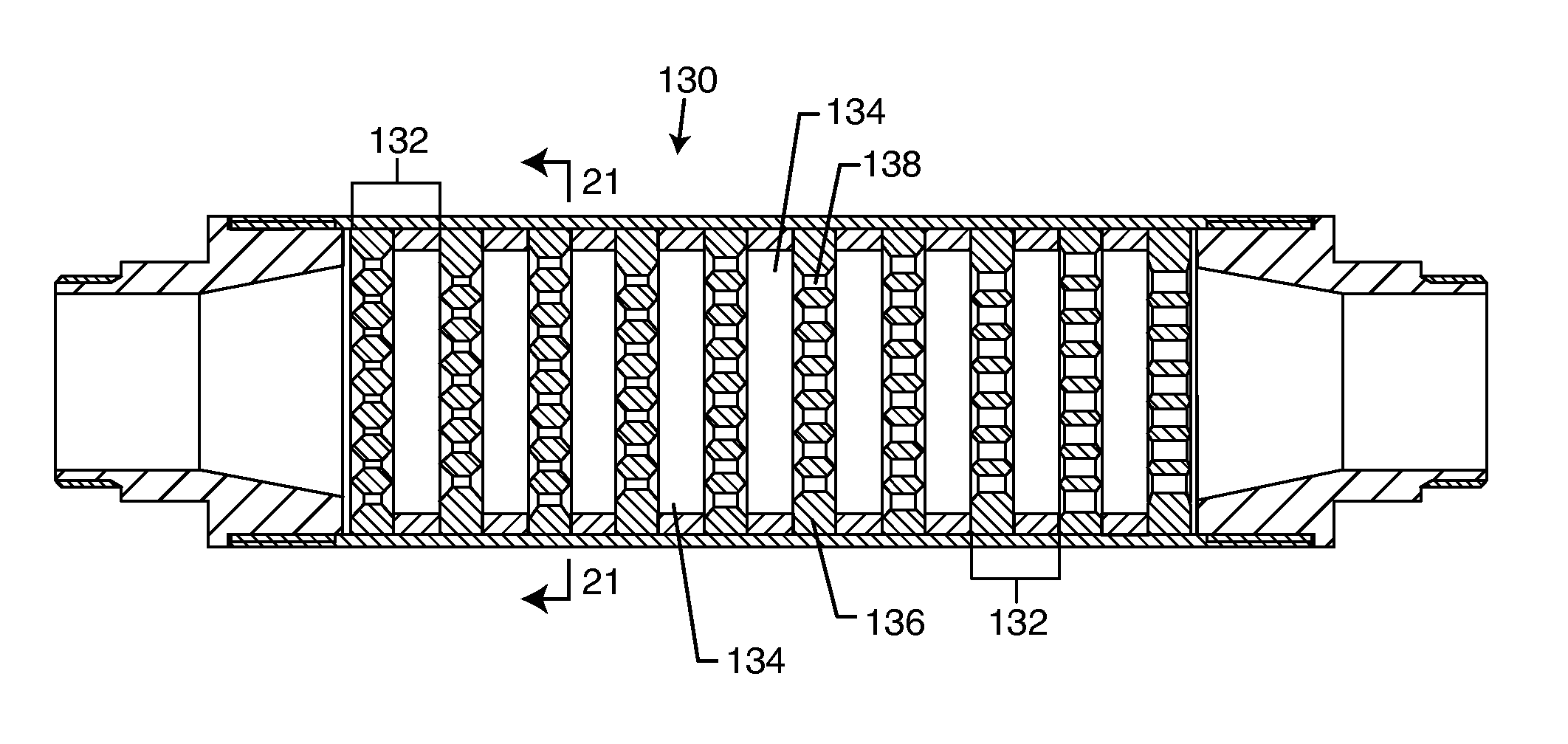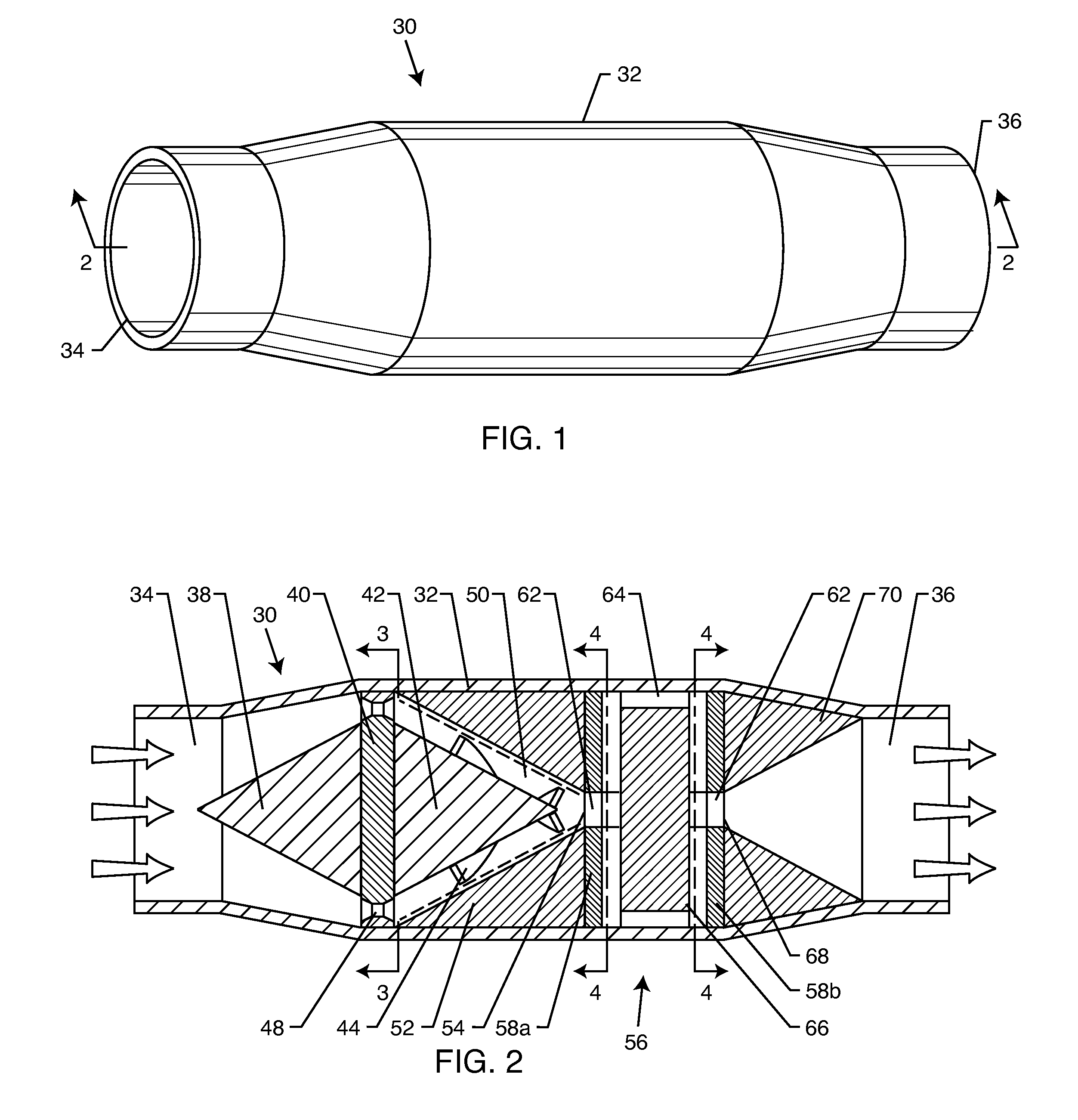Flow-through cavitation-assisted rapid modification of crude oil
a technology of fluidic crude oil and rapid modification, which is applied in the direction of hydrocarbon oil cracking process, thermal non-catalytic cracking, physical/chemical process catalysts, etc., can solve the problems of non-newtonian fluids, difficult refinement of shale oil, and negatively affecting its economic value, so as to reduce flow. , the effect of reducing the viscosity of fluidic crude oil
- Summary
- Abstract
- Description
- Claims
- Application Information
AI Technical Summary
Benefits of technology
Problems solved by technology
Method used
Image
Examples
Embodiment Construction
[0073]With reference to the attached drawings, a method and device for application of pressure, heat and vigorous mixing to generate changes in oil resembling cracking are disclosed. The method and device include utilization of a flow-through hydrodynamic cavitation to promote molecular rearrangements of the components and change heterogeneity and rheological parameters, which occurs in a short time and results in upgraded products.
[0074]The invention provides a process for the alteration of complex mixtures of hydrocarbons to produce rapidly stable improved products with greater efficiency and simplicity than conventional methods. Although this description contains much specificity, these should not be construed as limiting the scope of the invention but as merely providing illustrations of some of the presently preferred embodiments of the present invention offering many potential uses for the products of the present invention. Many other embodiments of the present invention are p...
PUM
| Property | Measurement | Unit |
|---|---|---|
| size | aaaaa | aaaaa |
| diameter | aaaaa | aaaaa |
| temperatures | aaaaa | aaaaa |
Abstract
Description
Claims
Application Information
 Login to View More
Login to View More - R&D
- Intellectual Property
- Life Sciences
- Materials
- Tech Scout
- Unparalleled Data Quality
- Higher Quality Content
- 60% Fewer Hallucinations
Browse by: Latest US Patents, China's latest patents, Technical Efficacy Thesaurus, Application Domain, Technology Topic, Popular Technical Reports.
© 2025 PatSnap. All rights reserved.Legal|Privacy policy|Modern Slavery Act Transparency Statement|Sitemap|About US| Contact US: help@patsnap.com



